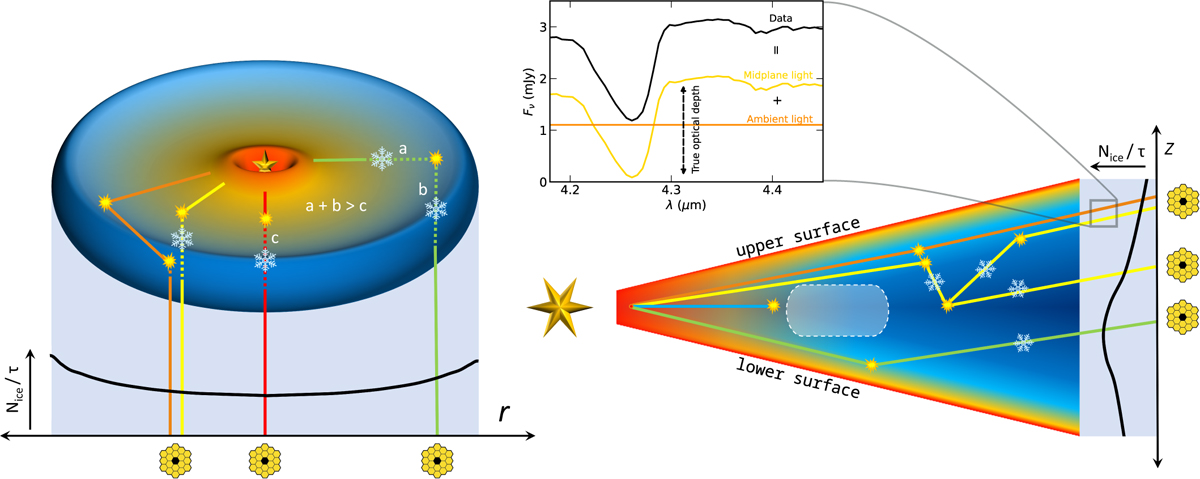Fig. 5

Download original image
Cartoon of the physical origin of the radial (left) and vertical (right) profiles of the ice optical depths. Left: since we observe ice absorption against the warm inner regions of a (close to) edge-on disk, all lines of sight trace ice along the full radial extent of the disk. This results in a largely constant optical depth profile along the radial direction. Since the path of the green photon trace is longer in the ice-rich outer disk (a + b) than the direct path (c), the traced ice column densities increase with radial separation of the observation. Right: direct lines of sight (blue) toward the star and warm inner disk are blocked by the optically thick disk midplane (white region). The observed light follows therefore a specific path through the optically thin disk regions, including one or multiple scattering events. The flux in a JWST spaxel is composed of photons with different paths (orange and yellow), that have not necessarily crossed equal lengths in the cold parts of the disk. This means that photon paths that cross large parts of the ice-rich regions of the disk can be saturated locally, even though the optical depth of the combined contributions is a defined, small number (see inset). The optical depth increases toward the midplane, because the light paths through the cold disk layers are more likely compared to paths higher up in the disk (green). Since the scattered light from the lower surface is tilted toward the cold midplane, and similarly, light from the upper surface is tilted away from the cold midplane, the profile is asymmetric with deeper ice features in the lower surface. Inset: qualitative schematic of the different flux contributions in the spectrum. The spectrum always has a contribution from light that passes through little ice (ambient light continuum; orange line) and light that passes through the cold regions of the disk, usually requiring multiple scattering events along the way (yellow line). The ratio of the contributions determines the optical depth in the observations if the feature is saturated. Photons with a single scattering event are less likely to reach regions with ice in the disk than photons with multiple scattering events (see also Fig. 3 in Sturm et al. 2023c).
Current usage metrics show cumulative count of Article Views (full-text article views including HTML views, PDF and ePub downloads, according to the available data) and Abstracts Views on Vision4Press platform.
Data correspond to usage on the plateform after 2015. The current usage metrics is available 48-96 hours after online publication and is updated daily on week days.
Initial download of the metrics may take a while.


